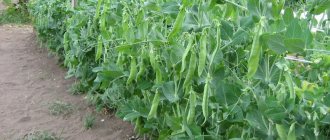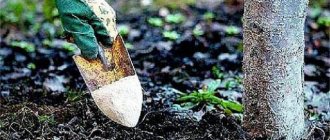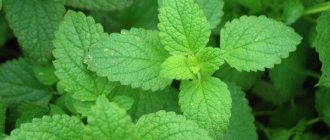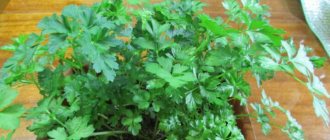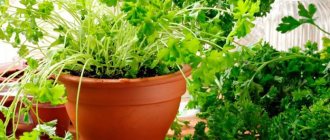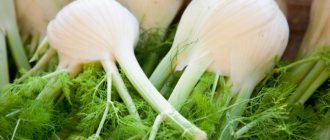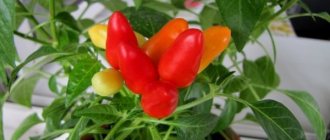Onion Slime Growing
Slime onion is a frost-resistant plant, tolerates winter well in open ground, young plants can withstand frosts down to -5-6°C. Quite moisture-loving, produces a high yield only with good moisture supply. With a lack of moisture, the yield decreases, the leaves quickly become coarse and taste unpleasant. It is demanding on soil fertility, so it is placed in an area with a high nutrient content. Slime onion grows well on loamy and peaty soils, as well as on black soil.
Agricultural technology
During autumn tillage, add 2-5 kg of humus, 20-25 g of superphosphate and 15-20 g of potassium salt per 1 m2; during spring tillage, add 20-25 g of urea.
Perennial specimens grow very early - in late March or early April. Budding usually begins in the first ten days of June, flowering - at the end of June - the first ten days of July, mass flowering - in the second ten days of July. The duration of the flowering period is on average 45 days. Peduncle height 65 - 85 cm (up to 100 cm). Seeds begin to ripen in mid or late August, in some years - at the beginning of September. Mass ripening - in the first half of September. The growing season usually ends in mid-October.
For the slime onion crop, the plot is plowed in the fall under the plow plow, harrowed in the spring, plowed before sowing, while adding peat, compost or humus 40-60 tons per 1 ha, ammonium nitrate - 2 quintals, superphosphate - 3-3.5 quintals, potassium salt - 2 c.
Care consists of 3 - 4 times loosening, watering in dry weather, 2 times feeding with mullein (1: and bird droppings (1:15) with the addition of mineral fertilizers (0.5 c of ammonium nitrate, 1 c of superphosphate and 0.5 kg of potassium salt per 1 ha). It is extremely resistant to diseases. It can be grown in one place for up to 5 years, then the bushes grow and the leaves become smaller. It is possible to force onions in closed ground. Bulbs for forcing are harvested in the fall and stored in boxes or piles , in open areas. Harvesting. Since this type of onion is characterized by early spring regrowth, it can be consumed as early as May. During the season, the leaves are cut off 4 - 5 times.
When sowing seeds, already in the first year a bush of 4-5 plants is formed, by the end of the second year they grow to 15-20, with a large number of leaves.
To obtain green feathers in March and April, it is advisable to cover part of the crop at the beginning of March with a light frame with plastic film. The growth of leaves under cover is much faster and the produce will be ready for harvest 8-12 days earlier than from an open area. In October, leaves and arrows are removed from the site, because in the spring they will interfere with the cultivation of the soil. When harvesting produce, several false bulbs are cut out or one leaves 25-28 cm high are cut off. They are harvested 3-4 times over the summer, the yield is 2-4 kg per 1 m2.
To obtain seeds from some plants with flowering stems, the leaves are not cut off. Flowering occurs in July, seeds ripen by early or mid-August.
Reproduction
Seeds. It can also be propagated by dividing the bush and seedlings.
Seeds are sown in early spring or in June - July. Seeds are soaked in water before sowing.
The placement pattern is tape, two to four lines, the distance between the tapes is 45 cm, between the lines - 20-30 cm, embedding depth - 2-3 cm.
When thinning, plants are left one from the other at a distance of 20 cm.
The seeding rate is from 10 to 18 kg/ha (2-3 g per 1 m2).
When sown in spring, seedlings appear on the 24-29th day. In the first year, the plants form a rosette of leaves and bloom in the second year.
For vegetative propagation, 2-3 year old plants are used. One bush produces 15-30 bulbs for planting. Planting takes place in late April - early May, June - July or early September. The distance between rows is 50-60 cm (up to 70) and between plants in a row 20-30 cm (up to 40).
Harvest and storage
The exact timing of harvest depends on the variety of onion. Several cuttings are carried out during the season.
The first cutting is made when the leaves reach 25-30 cm in length. The next harvest can be harvested in 4-6 weeks. The last cutting occurs in September. After this, the plant does not need to be touched so that it accumulates strength for wintering.
In total, 3-5 cuttings are carried out per season. Not only do they provide delicious, tender greens for the table, but they also stimulate foliage and bush growth.
When planting onions in spring, you can harvest them the following year. The same timing applies to winter sowing.
It is recommended to cut in damp weather. Cut greens cannot be stored for a long time even in the refrigerator. It can last up to 2 weeks. The pen should be placed in plastic bags.
For longer storage of the crop, you do not need to cut off the feather, but dig it up along with the bulbs. In this form it is better to put it in boxes. They should be stored in a cellar or basement.
An overview of the slime bow can be seen in the following video:
Slime onions provide the earliest greens, the healing properties of which make them useful for various diseases. With proper care, the crop will grow successfully for several years in one place and produce several harvests per year.
0
0
Copy link
Growing and care
Those who appreciate the taste of slime will certainly want to sow this type of onion in their area. Since the crop is perennial, its agricultural technology is slightly different from the usual vegetables.
In order for the planting venture to be completed successfully, you need to take into account the recommendations of experienced gardeners on selecting a site and further growing the plant.
Site selection and planting
First you need to figure out where, how and when it is best to plant onions. Usually the crop is sown in late May or early June. It is advisable to choose a sunny and open place, so that a lush rosette grows from the seeds, and the leaves are juicy and tender.
The landing site also needs to be properly prepared. The efficiency of cultivation and the difficulty of further caring for the plant will depend on this. First, you need to dig up the soil, removing all stones and roots of weeds. Secondly, the soil must be fertilized with organic matter, which will help stimulate the growth of the rosette. The soil on the site must be leveled and compacted. It is also necessary to limit the size of the bed, since in narrow areas the crop produces much more greenery (Figure 3).
Direct landing is carried out as follows:
- Seeds are sown directly into open ground at the end of May, deepening the planting material by only 1 cm. However, if the soil has warmed up enough, you can limit the depth to 0.5 cm.
- An interval of 40 cm should be maintained between individual rows.
- Don't be afraid that the planting was done too thickly. When the seedlings sprout, they can be thinned out, leaving one specimen for every 15 cm of the bed
There is no need to fear that the crop will be destroyed by return frosts. Even in natural conditions, slime grows in regions with a harsh climate, so even the changeable weather of the Moscow region will not harm the culture.
Watering and weeding
Further care for slime green onions is not difficult, since this crop is extremely unpretentious. But some nuances of forcing greenery should still be taken into account.
For example, during the growing season the crop needs to be watered regularly. Thanks to the saturation of the soil with moisture, the onions grow much faster, and the greens acquire a delicate taste. But, if you are unable to water regularly, do not be discouraged: the slime normally tolerates drought, as it accumulates moisture in the roots (Figure 4).
To prevent weeds from interfering with crop development, they should be removed regularly, combining this procedure with loosening. After about a year, the rosette will have grown sufficiently, and the soil can be loosened with an ordinary flat cutter, while at the same time embedding humus or ash into the soil.
Diseases and pests
Despite the unpretentiousness of drooping onions, some difficulties may arise when growing them in the garden. In particular, the crop can be affected by rot or other diseases. If not properly cared for, the area with onions can also be attacked by pests (Figure 5).
To prevent damage to the crop, preventive treatment is carried out twice a month. You can also use insecticides, but experienced summer residents advise using folk remedies. They are quite effective for prevention, but do not harm the greenery.
For example, a solution of laundry soap is suitable for eliminating pests, and an infusion of potassium permanganate will help to cope with diseases in the initial stages.
What varieties of green onions can be grown in an apartment?
Multi-tiered onions are considered the most unpretentious for growing at home in autumn and winter. It tolerates low temperatures and low light well. The duration of forcing is 25-40 days. From 1 kg of planting material you will get an average of about 2 kg of green onions.
Slime onion is early ripening and frost-resistant. It has flat, wide leaves with a blunt rounded end, tender and not rough, with a faint garlic aroma. It can be planted at any time of the year. For planting, use bulbs with a piece of rhizome from which roots extend. The slime onion is quite unpretentious.
Chives are a perennial plant with thin, tender leaves. It is also called rezun, rezanets. Very fragrant. The varieties “Bohemia”, “Medonos”, “Prazhsky”, “Albion”, “Chemal” are suitable for growing on a windowsill. This is one of the most beautiful types of onions.
Onion - produces more even greens than onions. It is moisture-loving, so it has to be watered frequently and air humidity maintained within 75-85%.
Shallots - in quality and quantity of greens, they are superior to both onions and spring onions. When growing it, special attention is paid to planting material: it is important not to include old bulbs infected with the virus. The variety “Yellow K-98” is considered the most productive. But experienced gardeners recommend giving preference to local varieties, as they are more resilient and productive.
Onions - southern varieties are more suitable for growing on a windowsill, for example, Karatalsky, Krasnodar G-35, Spanish 313, Kaba. At home, they grow better and produce more greenery. A good harvest is obtained by planting medium-sized bulbs.
Description
The name of the slime onion in Latin is Allium nutans. The culture belongs to herbaceous perennials. It grows in the wild in Altai, southeast Russia, and Siberia. In common people it is called Siberian onion. In Transbaikalia, slime grows on the hills, where it is known as mangyr.
Onion leaves are wide, thick, flat, with narrowly rounded ends. They are characterized by:
- juiciness;
- fragility;
- spiral bend;
- weakly expressed pungent taste.
When cut, the leaf secretes a slimy juice, which is why it is called slime. The foliage is collected in rosettes like a fan. The feather reaches 2 cm in width and is approximately 30 cm in length.
Slime belongs to the bulbous-rhizomatous group in the onion family. The fruits are false bulbs in the shape of a cylinder with a diameter of up to 2 cm - attached to a horizontal stem, which grows strongly and has powerful roots. Nutrients accumulate in the rhizome.
Juicy false onions with white scales are eaten together with young foliage. The next year after planting, when the slime blooms, spherical umbrellas with light pink flowers are formed.
Onions are frost-resistant. Not afraid of frosts down to – 40 °C. The plant loves moisture. Reproduction occurs by seeds or bulbs. Growing in one bed takes a maximum of 5 years.
A powerful, hard peduncle grows up to 70 cm. Its drooping bud straightens before the umbrella opens, hence the scientific name for drooping slug. Flowering dates fall in the second half of the summer season. The peak of decorativeness lasts a month.
Seed ripening is uneven. They are collected as they ripen; the second method is to cut off the shoots and ripen the seeds, like onions.
Reproduction methods
The main methods of propagation of slime: from seeds and vegetatively - by dividing the bush.
Propagation from seeds is carried out in cases where it is not possible to obtain a cutting or there is a desire to plant new varieties on the site. This method is quite labor-intensive, and it will take 2 years to obtain an adult plant. Growing from seeds can be done either by seedlings or by sowing in open ground. Seeds are sown early, as soon as the ground thaws. Caring for seedlings consists of watering, fertilizing, removing weeds and loosening row spacing.
Young plants enter the flowering phase only in the second year, and greenery can be cut no earlier than the third year after sowing, since before this time it will not gain all the nutritional and beneficial properties.
Blooming inflorescences decorate the plant with fluffy “balls” for about 30 days in July-August.
Onion blossom
When receiving your seeds, you need to remember that due to long flowering, ripening occurs unevenly, so it is recommended to collect the seeds in several stages or after the flower stalks have dried in September. Greens are not cut from plants intended for seed production.
Vegetative propagation is preferable, since the plant recovers quickly and the greens can be cut the next year. The best time to obtain cuttings containing a piece of rhizome and several bulbs is August-September, so that the plant has time to take root before frost, or early spring.
Lettuce or lettuce?
When people say the convenient phrase onion, lettuce, most often they are not talking about onions, but about lettuce. Lettuce or lettuce is a genus of plants from the Asteraceae family. Since ancient times, lettuce has been used not only as food, but also as a medicinal plant, and even as a gourmet delicacy. Today, lettuce or lettuce has not lost its importance and is one of the most popular types of summer green vegetables.
There are many weeds among the types of lettuce, but head lettuce is one of the most popular plants, with many varieties. All over the world, head lettuce is grown both on an industrial scale and in amateur beds.
The advantages of head lettuce include early ripening and cold resistance. Young seedlings tolerate short-term frosts down to -5, and adult plants up to -8 degrees. With prolonged exposure to low temperatures, the plant may pass the head stage and begin to bloom. The optimal temperature for growing is +16 + 18 degrees. At higher values, the lettuce leaves become coarser and the stemming phase begins. If you follow agricultural technology, you can begin harvesting already 45-60 days after sowing.
You can sow head lettuce both before winter and in early spring after the soil has thawed. Fans of this crop also sow lettuce in the summer. It is not necessary to set aside a whole bed for it; you can sow it between rows or along the edges of the beds. In terms of nutritional value and benefits, head lettuce is superior to leaf lettuce.
The following varieties of lettuce are popular today:
- Eva, early with dense heads weighing up to 500.0 g
- Grenada, early, color of heads of cabbage is gray-green, weight up to 1500.0 g
- Iceberg, medium ripening, productive, weighing up to 900.0 g
- May King or May King, medium variety, heads up to 25 cm in diameter
- Berlin yellow, the heads of cabbage are not large, loose, without bitterness
Based on all of the above, it is clear that lettuce is not an onion, but a salad, but what can be meant by the name lettuce?
Useful properties of green onions
In winter, green onions contain 3-4 times more vitamin C than the bulb itself. During forcing, the leaves accumulate 50 mg of vitamin C and 5 mg of carotene.
Green onions are high in vitamin K. This is an important nutrient responsible for blood clotting.
The health benefits of onions are impressive:
- prevents flu and colds;
- reduces the risk of cardiovascular disease and some types of cancer;
- has antibacterial properties;
- promotes digestion;
- regulates blood sugar levels, which is especially important for people with diabetes or prediabetes.
A glass of finely chopped green onions contains only 19 calories, which makes them an excellent product for proper nutrition and weight loss.
How to grow seedlings from seeds at home on a windowsill?
Onions are grown in open ground, greenhouses, greenhouses or in various containers at home.
How to prepare seeds for planting?
To get a high yield, the seeds should be properly prepared:
- Before planting, they are soaked in a pale pink solution of potassium permanganate and washed in cold water.
- After this, the seed material is dried, spread in a thin layer on paper or a napkin, and placed in a biostimulant solution.
How to sow?
Pre-prepared seeds are planted in wooden boxes or plastic containers filled with nutritious soil mixture. The culture prefers loamy, slightly acidic or neutral soil. To grow seedlings, use soil consisting of equal parts:
- garden soil;
- coarse sand;
- peat and humus.
The seeds are sown in furrows to a depth of one centimeter, sprinkled with soil on top and watered with warm water.
The containers are placed in a warm, bright room for germination.
To shorten the germination period, the boxes can be covered with plastic film or glass to create a greenhouse effect.
In this case, the boxes must be opened periodically for ventilation. The first shoots appear after 10 – 14 days.
How to care?
- Lighting. After the first shoots appear, the containers with seedlings are moved to a bright place. In case of insufficient lighting, additional illumination with fluorescent lamps is used.
- Watering. Young plants need moderate watering. Moistening is carried out as the top soil layer dries. The soil should not be allowed to dry out completely or become too waterlogged.
- Picking. If the plantings are very dense, it is necessary to remove weak shoots. Thinning is carried out in several stages. As a result, the strongest seedlings remain.
- Hardening. They begin 7–15 days before planting seedlings in a permanent place. Boxes with seedlings are taken out into the open air. gradually increasing the time spent outside.
Varieties of onion crops
The nutritional and medicinal value of green onions is undeniable: it contains important substances for humans that increase the body's resistance to diseases. There are few main dishes that do not use different types of onion crops.
For forcing greens at home, they use onions, shallots, batun, slime, chives, multi-tiered and other perennial onions.
Onion
For home gardening, multi-primed, highly branched varieties of onions, as well as those with a short dormant period, are best suited.
Preference is given to varieties adapted to low levels of light, especially if forcing takes place in winter
The most popular varieties of onions used for homemade onions are listed in the table:
| Name | a brief description of |
| "Arzamas local" | Mid-season, multi-locular, spicy. The bulb is rounded and elongated, weighing 50-100 g. Leaves are of medium thickness, with a slight waxy coating |
| "Bessonovsky local" | Early ripening, mid-season, sharp. The bulb is round, weighing 20-40 g. The leaves are powerful, with a waxy coating, growing in the amount of 8-15 pieces |
| "Spanish 313" | Late-ripening, small-growing, sweet. The bulb is round-flat, weighing 40-200 g, not heavy. Feathers are thin, delicate, light green |
| "Kaba" | Late-ripening, small-growing, semi-sharp. The shape of the bulb is in the form of a “cast iron”, weight is 60-220 g, shelf life is short. Leaves of medium thickness with a pronounced waxy coating |
| "Iris" | Early ripening, small-lobed, semi-sharp. The bulb is round, weighing 35-86 g, suitable for long-term storage |
| "Spassky local improved" | Mid-season, multi-primordial, acute. The bulb is round-flat, weighing 40-52 g, dense |
| "Strigunovsky local" | Early ripening, small-growing, pungent. The bulb is round, with a slight slope up and down, weighing 45-80 g. Leaves of medium thickness |
| "Krasnodar G-35" | Mid-season, small-sized, slightly spicy. The bulb is round, weighing 50-170 g. The feathers are large with a slight waxy coating, grow in the amount of 5-15 pieces |
Onion
This is a specialized and one of the most delicious green onions. A distinctive feature that allows you to successfully drive the batun to greens is a short period of rest (1.5-2 months). Experienced vegetable growers note the profitability and faster production time of batun greens in greenhouses and at home, compared to onions, and recommend popular varieties and hybrids registered in the State Register of the Russian Federation, for example, “April”, “May”, “Tenderness”, “ Russian Winter”, “Ural Family”, etc.
The Maysky onion (pictured) is late-ripening, highly branched, and pungent. Perfect for cutting delicate, juicy green feathers in winter
Chives
This culture is moisture-loving and cold-resistant. It is characterized by early ripening and resistance to peronospora. For forcing, mainly two varieties are used: “Honey plant” with a long yield of emerald green leaves with a slight waxy coating and a semi-sharp taste, and “Nemal” with feathers of a sharp taste, green color, covered with a medium waxy coating.
Feathers are cut selectively or individual plants are pulled out along with their roots, thinning home plantations
Preparing a site for planting slime onions
Planting is best done in the second part of May or early June. The soil should be chosen only fertile. This way it will be easy to get the desired result.
Predecessors
Preparatory work must be carried out before planting. The area will need to be carefully dug up. This should be done on the bayonet of a shovel. Deep digging is carried out so that fertilizer can be applied. They will help stimulate the growth of seedlings.
You need to sow slime onions in soil that has warmed up well after winter. If the air temperature outside is low, then it is better to postpone planting until the weather warms up.
Sowing is carried out according to a single-row pattern. The width between rows should be about 70 cm, and the depth of laying grains should be 1.5 cm.
After the planting material is in the ground, the top layer of soil must be slightly compacted. A week or two after germination, you can begin thinning. This is an important procedure, since it depends on the appearance of the plant. The distance between seedlings should be within 15 cm.
- Start preparing the site in the fall. When digging, add per 1 m²: 5-6 kg of humus, 30-35 g of superphosphate, 20-25 g of potassium salt, and in the spring - 15-20 g of ammonium nitrate.
- Peat and loamy soils are ideal for growing slime onions.
- Preferably bright light, grows well in shade.
- Suitable crop predecessors: cabbage, tomatoes.
You can plant slime onions in different ways. If such a crop already exists on the site and is in good condition, then it can be propagated by dividing the bush. For the first planting you need seeds.
Seeds
You must act according to the following algorithm:
- Prepare planting material. To disinfect, you need to immerse it in a solution of potassium permanganate for a quarter of an hour. The use of a growth stimulator is also recommended - you need to act according to the instructions.
- Germinate the seeds. To do this, they need to be placed in a damp cloth, periodically moistening it so that it does not dry out.
- Prepare the area for planting. The ground should be dug up with compost or rotted manure in the fall. In the spring you need to loosen the soil and level it. Make furrows 1.5-2 cm deep, leaving 20-30 cm between rows, and water them.
- Sow the seeds. If the seeds are sown in April, it is recommended to organize a shelter. It is enough to cover the beds with film or other covering material. The culture is frost-resistant, but has not yet taken root, so frost is dangerous for it.
Seedlings
Onion seedlings can be grown in plastic containers, boxes, pots, and cups. Seeds should be sown in late February or early March.
You need to act according to the following algorithm:
- Prepare planting material. To make the seeds germinate faster, it is recommended to soak them in warm water for a day. After this, it is necessary to dry the raw materials.
- Prepare containers for planting. It is necessary to fill them with earth and make grooves. Deepen to a maximum of 1 cm. Water the furrows immediately before planting.
- Sow the seeds. There is no need to bury them, just cover them with a layer of soil.
- Cover containers with glass or film. The crop requires shelter only before germination. At this time, you need to keep it in a warm place.
- When sprouts appear, place containers with seedlings in a place with good lighting. If necessary, use additional light sources.
- Picking. It should be carried out as needed if the planting is too dense. It is better to carry out picking in several stages, leaving only the strongest and healthiest specimens.
- Watering. Seedlings should be watered sparingly. Orient the frequency of watering to the condition of the soil.
- Hardening. This stage should begin 1-1.5 weeks before planting in open ground. The first time, the seedlings should be taken out into fresh air and left for a quarter of an hour. This time should be gradually increased.
Dividing the bush
This propagation method is suitable for plants that are at least 3 years old. Only a strong and healthy bush can be divided. This can be done in autumn or spring. If all the work is done in the fall, then in early spring the planted bushes will already produce the first greenery.
- Carefully dig up the bush. In this case, you should try to avoid damage to the root system.
- Divide the bush into several parts. You need to focus on the number of bulbs. There should be at least 3 of them on each part.
- Shorten the roots. They only need to be trimmed a little.
- Plant parts of the bush in pre-prepared holes and sprinkle with soil.
Caring for a plant in open ground
Cultivating slime onions requires comprehensive care.
Watering
The culture needs regular but moderate watering. With a lack of moisture, the quality of the greens suffers - they become rough and less juicy. The frequency of watering should be based on the condition of the soil. When the soil dries out by 2-3 cm, it is time to water the beds.
Watering should be stopped in August-September after the last cutting of greenery.
Top dressing
For good growth and development, the slime onion requires several feedings:
- in the fall it is necessary to apply organic fertilizers - compost, rotted manure;
- in the spring, after the snow melts, they resort to complex fertilizers suitable for the given crop - you need to dissolve 20 g of the product in a bucket of water;
- in the summer it is useful to use urea for feeding.
Weeding and loosening
You should not allow moisture to stagnate at the roots of the plant, so you need to regularly loosen the soil. It is better to do this after watering, every time. You should also loosen the soil after rain. Loosening provides not only better penetration of moisture into the soil, but also access of oxygen to the root system.
An important step in growing slime onions is the regular removal of weeds. Without timely weeding, weeds will draw out the nutrients that the crop itself needs, so its growth and development will slow down. The plant will begin to wither and may die.
Additionally, they resort to mulching. This technique allows you to retain moisture. Cut grass can be used as mulch, which will then become an excellent fertilizer.
Pest and disease control
Slime onions are resistant to many diseases and pests, so if you follow the rules of crop rotation and cultivation, problems usually do not arise.
One common problem is onion fly. The plant is harmed by larvae that devour it from the inside. Prevention is dusting with tobacco dust, treatment with wood ash. It is also useful to use a solution of laundry soap for watering - it also protects against other pests.
If affected by fungal diseases, you should resort to fungicides. To prevent bacterial and viral diseases, it is useful to use a weak solution of potassium permanganate. They should water the soil and also treat the cuttings after harvesting. When processing, you must act carefully so as not to wet the heavily cut areas.
The condition of the plantings should be regularly inspected. If signs of diseases and pests appear, appropriate measures must be taken immediately. In most cases, affected specimens must be removed and burned.
Slime onion growing
Slime onions are very popular due to their frost resistance and unpretentiousness. Growing it in the middle zone is very simple even for a novice gardener.
Where can you grow slime onions?
Due to the beautiful, bright green leaves, the slime onion looks great on alpine hills or flower beds with low-growing flowers. Moreover, it begins to grow immediately after the snow melts, so even without having a garden, you can please yourself with fresh herbs already in early March.
Regardless of the location of the plant - in a decorative flower bed or garden bed, you should adhere to a number of simple rules. So, onions do not like excess moisture, so they need to be planted in light soils - sandy and loamy, where water will not stagnate after rains or melting snow. Otherwise, the rhizomes may begin to rot and the plant will die.
But even if the soil is problematic, don’t be upset! Slime onions grow well in high beds, from where all the “excess” water drains. Also, if you plan to use such onions for food, and not just as an ornamental plant, you need to avoid acidic soil. It gives the leaves an unpleasant bitter taste. In this case, the soil will have to be limed, chalk or dolomite flour added.
Slime Bow
How to plant slime onions?
This type of onion is propagated both by seeds and by dividing bushes. When planting individual bushes, you need to remember that they grow well in a circle, displacing other plants. Strong, grown bushes do not allow even weeds to grow! Therefore, you need to immediately limit possible growth, if it is undesirable, by planting onions in buried pots without a bottom or fencing them with sides.
In the garden, onions can be planted in places where tomatoes, cucumbers, cabbage, potatoes and even radishes were previously grown. But after any bulbous varieties, it is undesirable to plant this type of plant. As well as “keeping” it in one place for more than five years - the bushes degenerate, become small and inconspicuous.
It is better to plant divided bushes in the fall - then in the spring you can get the first harvest. If onions are grown in beds, then the distance between the rows is made quite large - up to half a meter. The bushes are planted no closer than 15 cm from each other - do not forget that onions grow well! The soil is fertilized with rotted manure, compost or humus - at the rate of 8 kg per 1 m².
Slime onions can withstand temperature drops down to -40°C, so there is no need to cover them or move them indoors for the winter. In the spring, the soil is dug up for aeration, and about half a bucket of diluted manure is poured under each plant. But by no means fresh!
Slime Bow
Is it possible to grow slime onions in an apartment?
How to grow slime onions on a windowsill? As easy as pie! To do this, when dividing an “adult” (two- or three-year-old) bush, it is enough to plant the separated plant in a spacious pot - up to half a meter in diameter. After this, it is advisable to keep the plant for a month in a cool and dark place - a cellar, or covered on a balcony.
It is worth paying attention that the slime onion reproduces precisely by its rhizome. Therefore, when dividing bushes, you need to ensure that the divisions have roots and at least three false bulbs each. Before planting, the roots are shortened slightly, but not completely cut off.
Before planting, the roots are shortened a little, but not completely cut off.
Optimal growing conditions
Slime onions can be grown in open ground, greenhouses or greenhouses or various containers - boxes, pots. In any case, we must remember the need for sufficient space, since the culture is growing greatly.
For successful cultivation, other conditions must be met:
- Following the rules of crop rotation . It is good to plant onions after cucumbers, cabbage, tomatoes, potatoes and other nightshades. Planting after green manure is also effective. Any representatives of the Onion family are bad predecessors.
- Sunny area . The culture is frost-resistant and shade-tolerant, but also loves warmth and light.
- Elimination of moisture stagnation . It is better to choose an elevated area without close groundwater. Excess moisture negatively affects the root system of the crop and can cause the death of the entire plant.
The proximity of the slime onion with its onion counterpart is not recommended. This may affect the taste of the crop.
The slime onion is unpretentious to the soil conditions. The culture prefers loamy soils. The acidity level is important. It may not affect the growth and development of the crop, but it does affect the taste of the greens, giving it an unwanted bitterness. If the soil is acidic, then dolomite flour, chalk or lime should be added to it.
Slime onion is a frost-resistant plant, so it is not necessary to dig it up for the winter. This measure is resorted to if you want to receive fresh greens even in winter. In this case, you need to dig up the rhizomes and plant them in containers or boxes.
No special winter shelter is required for slime onions in open ground. You can cover it with grass or leaves if the winters are quite harsh.
Varieties
The few varieties of slime onions differ in terms of ripening, yield, durability and size. Most often you can find:
- "Green." Compact high-yielding bush with leaves of excellent taste. Resistant to rust and peronospora.
- "Belorussian". A variety with very high frost resistance and good durability. Can grow in one place for up to 7 years.
- "Dwarf". Leaves 15‑25 cm, mildly pungent taste. Leaf formation is continuous, which allows harvesting as needed from April to autumn.
- "Leader". A mid-season variety, the main advantage of which is the uniform growth of leaves, which facilitates harvesting during industrial cultivation.
- "Broadleaf". Low-growing compact variety, with leaves up to 20 cm long.
- "A treasure trove of health." A productive variety with early ripening.
An onion variety with a promising name
Slime onion is undeservedly underestimated by many gardeners. Unpretentiousness, minimal care, high decorativeness, unusual taste and fresh herbs throughout the year are the undeniable advantages of the culture.
Growing it in the middle zone is very simple even for a novice gardener.
Characteristics
In nature, the slime onion prefers steppes, meadows and rocky slopes. It grows in Siberia, the southeast of European Russia and Central Asia.
The plant has the following characteristics:
- stem height – up to 70 cm;
- before flowering, the stem is drooping, and with its beginning it straightens;
- 6-8 leaves are formed up to 30 cm long and 4 cm wide;
- the greens are fragile and juicy, the taste is usually slightly spicy with garlicky notes;
- early growing season - begins after the snow melts, the crop provides the earliest greens for the table in the garden;
- flowering in the 2nd or 3rd year of life;
- the formation of beautiful spherical inflorescences - whitish-pink, lilac, purple;
- frost resistance;
- moisture-loving;
- the formation of bulbs up to 1.5-2 cm in size - they are false and unsuitable for food;
- propagation in different ways - seeds, dividing the bush;
- growing in one place for 3-6 years.
Biological characteristics of the plant
Slime onion (Allium nutans L.) is a perennial herbaceous plant with a powerful root system and flat (unlike most varieties of onions, which produce hollow feathers, hollow inside) leaves, like garlic. Instead of a full-fledged bulb, the plant forms small but numerous false bulbs - thickenings growing from the rhizome. The bulbs are cylindrical in shape, 1.5-2 cm long, suitable for food at the initial stage of the growing season, as long as they contain juicy scales.
Some varieties have rather large bulbs and a tall false stem
The rhizome is located at a depth of 3–5 cm. From it, false bulbs gradually grow radially in all directions and by 4–5 years of age the plant reaches a diameter of 25–30 cm. The bulk of its strong intertwined roots are located in the upper layer of soil (15– 20 cm), individual roots can go deeper than 0.5 m.
Flowering begins in the 2-3rd year of the growing season. Peduncles up to 50-80 cm high, coarse and thick (not used for food), initially droop, which explains one of the names of the species - “drooping”. The arrows bear spherical (3-4 cm in diameter) umbrella inflorescences, consisting of 80-100 flowers. When the leaves are regularly cut, the plant does not bolt.
The main interest for gardeners are the leaves , which appear in the form of lush, dense, semi-spreading rosettes almost immediately after the snow melts, much earlier than other green and vegetable crops. From the beginning of May until late autumn, fresh greens can be cut regularly, obtaining from 1 m2 to 3-4 kg of vitamin product per season. The plant does not have a pronounced dormant period and grows green mass constantly until the onset of stable frosts, and in greenhouse or home conditions - all year round. The foliage retains high taste even at the bolting stage; with proper care, it does not become coarse and remains juicy and fleshy. The leaves are flat (linear type), thick and very brittle, with rounded ends and a smooth surface covered with an abundant bluish-bluish waxy coating. The leaf blade is on average 25-30 cm long and about 2 cm wide, slightly twisted in a spiral around a vertical axis, which ensures stability.
Drooping peduncles are one of the characteristic species features of the plant.
Versatility of use
This type of onion is of great interest to gardeners, as it combines wide application possibilities and high decorative value.
Beneficial features
Slime contains few essential oils, compared to most common onion crops, and therefore does not have pronounced bitterness and pungency. Its taste is more delicate, slightly spicy with a garlicky flavor and aroma. The chemical composition contains various groups of vitamins, including ascorbic acid and carotene (up to 50-75 mg and up to 2.5 mg, respectively, per 100 g of fresh product), macro- and microelements, phytoncides, flavonoids and other biologically active substances. Large quantities of iron salts accumulate in the leaves, which provides the plant with not only nutritional but also medicinal value. It is recommended to use it to increase hemoglobin levels in case of anemia and blood diseases, gastrointestinal disorders, since the mucous juice stimulates the stomach well and does not have an irritating effect even with gastritis and ulcers.
Slime leaves are also used externally to heal wounds and improve the condition of skin and hair.
Greens and false bulbs are used in home cooking to prepare fresh salads, soups, meat and fish dishes. The leaves are salted and pickled for the winter (according to recipes similar to preparing garlic arrows) or dried to obtain an aromatic seasoning.
Decorativeness
A perennial plant that can actively develop in one place (when grown for greens, no more than 4-5 years are recommended) without the need for regular digging, drying and replanting of bulbs, fits perfectly into natural flowerbed compositions.
Thanks to its interesting textured foliage, which retains freshness and bright color throughout the entire season, as well as long-term flowering, slime organically combines with other ornamental crops, for example:
- cereals;
- coniferous;
- sage;
- yarrow;
- echinacea;
- delphinium.
It is used to form low borders along paths or along the perimeter of flower beds, to create picturesque curtains on lawns or under trees.
The flowering period begins approximately in mid-July and lasts until the end of August, the seeds ripen in September
Long arrows with lush spherical inflorescences, consisting of many small flowers of white, pink, light lilac or purple, look great in a vase and last a long time when cut. If you dry them (preferably hanging with their heads down), a bouquet of dried flowers will serve as an effective decoration for your home interior for a long time.
The benefit of onion in the garden also lies in the fact that it is a wonderful honey plant, attracting the necessary pollinating insects and at the same time repelling insect pests due to its high content of phytoncides, which makes it an ideal partner in joint plantings.
